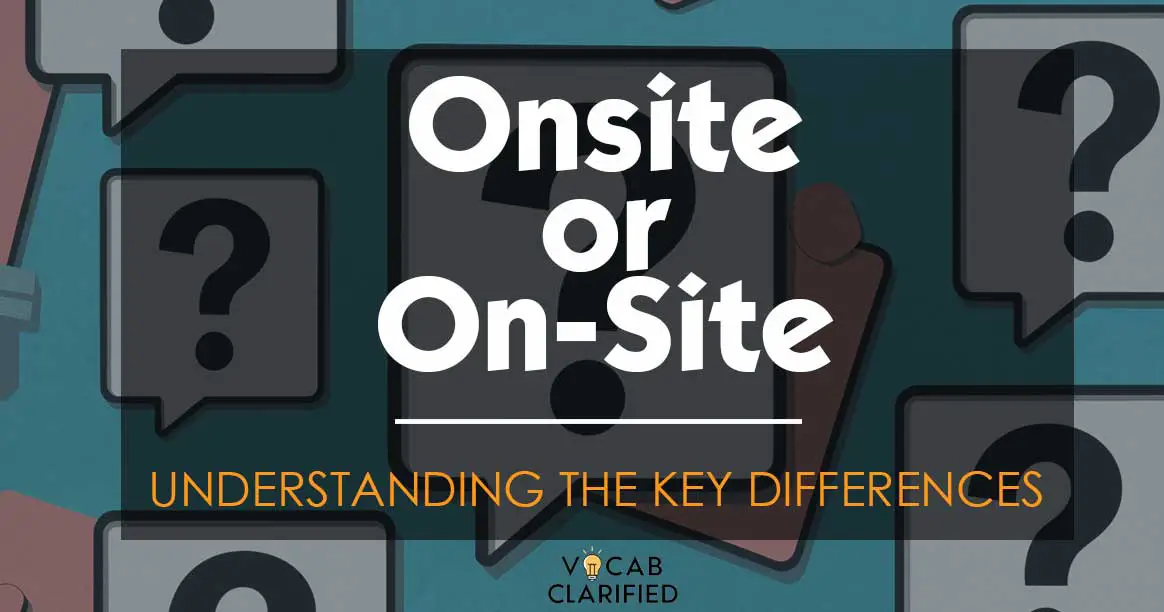Have you ever come across the terms “onsite” and “on-site” and wondered which one is correct or when to use each? You’re not alone! These two terms can be confusing, especially since they are often used interchangeably.
This article explores the proper usage of these terms and provides guidance on how to choose the correct one based on context.
Understanding Onsite And On-Site
Onsite: Definition and Usage
“Onsite” is typically used as an adjective, meaning that something is located or taking place at a particular site or physical location.
This term is often seen in the context of work, events, or services performed at a specific place.
For example:
- “The onsite team is responsible for handling customer inquiries.”
- “We provide onsite support for all hardware-related issues.”
In these examples, “onsite” describes services or personnel that are physically present at the work location.
On-site: Definition and Usage
Contrastingly, “on-site” is also an adjective but is more commonly hyphenated when it directly modifies a noun.
It carries the same meaning as “onsite,” referring to something that happens at a particular place. The hyphen is primarily used to enhance readability, especially in formal writing.
For instance:
- “We have on-site parking available for all employees.”
- “The on-site manager will assist with any issues during the event.”
Here, “on-site” is used to modify “parking” and “manager,” emphasizing their physical presence at the location.
Side-by-Side Comparison
To further clarify the differences and help you decide which to use, here’s a side-by-side comparison:
| Aspect | Onsite | On-site |
| Definition | Located at a specific place or location | Located at a specific place or location |
| Common Usage | “The onsite team is ready to assist.” | “On-site services are available.” |
| Key Differences | Often used in casual or business writing | Typically used in formal contexts with a hyphen |
When deciding between “onsite” and “on-site,” consider the formality of your writing and the readability of the sentence. If you are writing informally or in a business setting, “onsite” without the hyphen is often acceptable.
However, in formal documents, “on-site” with the hyphen is typically preferred for clarity.
Everyday Usage Examples
Below are examples to illustrate how “onsite” and “on-site” fit into everyday language:
- “The onsite engineers will begin the installation tomorrow.”
- “On-site security is available 24/7.”
- “We offer onsite technical support for all our products.”
- “The on-site facilities include a gym and a cafeteria.”
- “Onsite training sessions will be conducted next week.”
- “Please park in the designated on-site lot.”
Conclusion
In summary, both “onsite” and “on-site” refer to something located or taking place at a specific site. The primary difference lies in their usage and formality. “Onsite” is often used in less formal writing, while “on-site” with the hyphen is preferred in formal contexts.
When in doubt, consider the tone of your writing and the clarity of your sentence to make the best choice.

